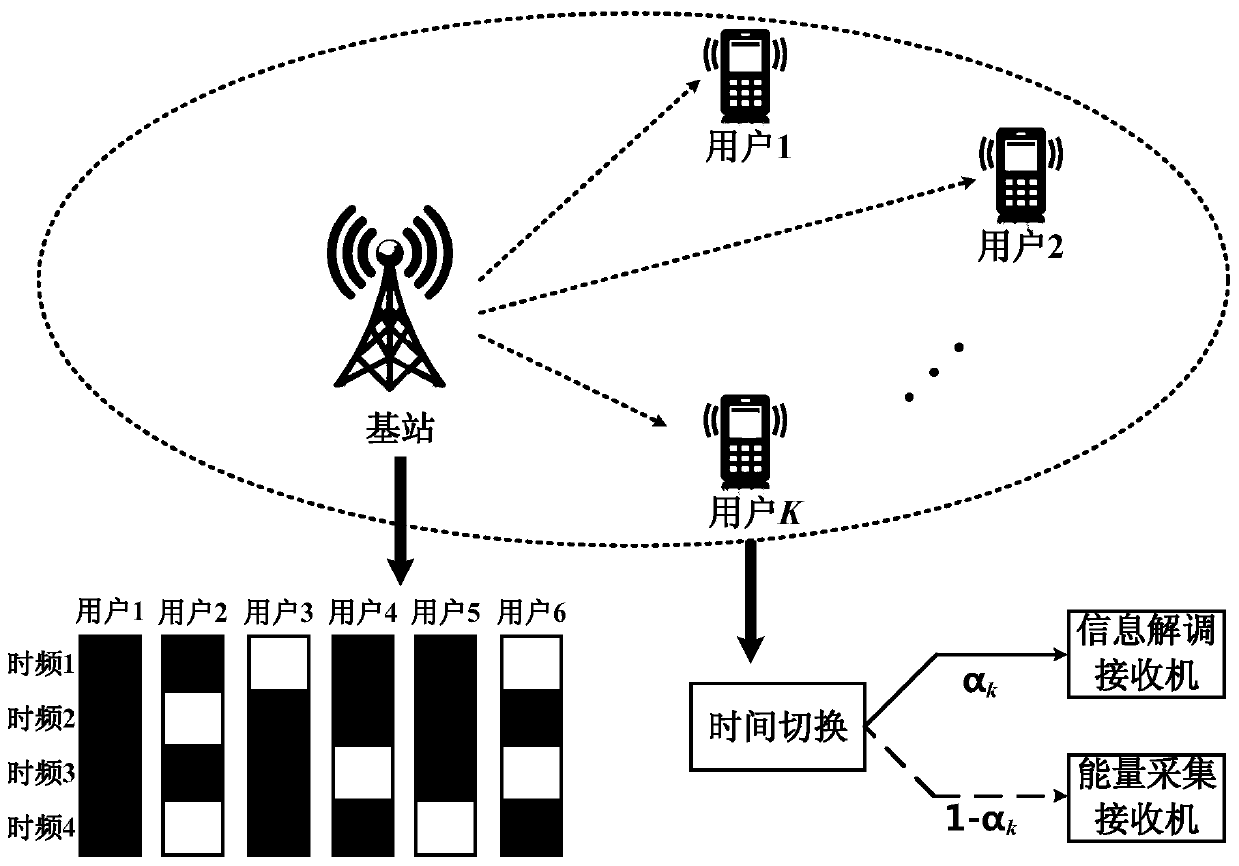A resource allocation method based on transmit power minimization in an energy-carrying multi-carrier NOMA system
A technology of transmitting power and resource allocation, applied in the field of green communication, can solve the problem of large network energy consumption, and achieve the effect of less transmission power and minimization of transmission power
- Summary
- Abstract
- Description
- Claims
- Application Information
AI Technical Summary
Problems solved by technology
Method used
Image
Examples
Embodiment
[0023] Such as figure 1 As shown, this embodiment provides a method for resource allocation based on the minimization of transmission power in an energy-carrying multi-carrier NOMA system, including the following steps:
[0024] Step 1: Establish the network model of the multi-carrier NOMA system with energy: the wireless energy-carrying technology using the time switching scheme (TimeSwitching, TS) and the multi-carrier NOMA system using the pattern division multiple access technology (Pattern Division Multiple Access, PDMA) Combined, the system model as figure 2 shown; specifically include the following:
[0025] The energy-carrying multi-carrier NOMA system consists of a base station (Base Station, BS) and K users randomly distributed in the cellular network, and the set of all user indexes is expressed as
[0026] The total available bandwidth B of the system is evenly divided into N subcarriers, and the set of all subcarrier indexes is expressed as The bandwidth of...
PUM
 Login to View More
Login to View More Abstract
Description
Claims
Application Information
 Login to View More
Login to View More - R&D
- Intellectual Property
- Life Sciences
- Materials
- Tech Scout
- Unparalleled Data Quality
- Higher Quality Content
- 60% Fewer Hallucinations
Browse by: Latest US Patents, China's latest patents, Technical Efficacy Thesaurus, Application Domain, Technology Topic, Popular Technical Reports.
© 2025 PatSnap. All rights reserved.Legal|Privacy policy|Modern Slavery Act Transparency Statement|Sitemap|About US| Contact US: help@patsnap.com



